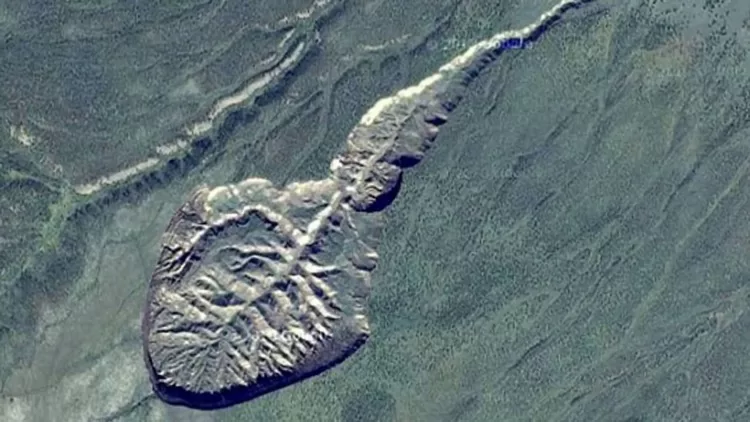World’s second largest megaslump which is also known as the gateway to the underworld is found which has frozen for only six lakh years. Before it it was Batagay megaslump which is the world’s largest megaslump frozen landslide. And due to curiosity the human activity in that region has increased a lot.
Scientists have been doing research on it to understand its ancient past. And the scientists reveal that it is over 6 lakh years old.
It has covered an area of 0.8 square kilometers and the evidence of its ancient pas has been preserved by the sediments. Now the slump is one of the subjects that science can study upon including the 7.00.000 year old. Canada’s Yukon.
This frozen slump is the layer of soil, rocks, and the sediments which were frozen years ago. It is mostly found in the polar region or high altitude mountainous area. It preserves the evidence of the earth’s climate.
Thomas Opel, a paleoclimatologist from the Alfred Wegener institute situated in Germany says “We can now just add another site to the map so that we can really state reconstructing the climate and also the environment for the period of time”.
According to the new findings based on cryo stratigraphic Observations, providing evidence of formation of permafrost and its degradation.
What can we find :
This permafrost megaslump hides and stores the organic matter that existed in the past such as plants, animals, and microbes. Since it’s frozen, this cold temperature slows down the aging process or decomposition and keeps it well preserved.
These frozen megaslamps contain layers of icer or ice lens. And this ice formation traps the dust particles, isotopes and air bubbles and provides exact data of the atmospheric composition and climate conditions.
Scientists then preserved its sediments that may have contained in the form of pollan, plant remains. These sediments contain valid information and also study of the vegetation changes.
The team used radiocarbon analysis of the frozen megaslamp to find the exact time and measurements and study reveals that the slump came into existence about 6,50,000 years ago.
Opel says “ Given the fact that there is so much ancient carbon in the permafrost, we hope we can find a little bit to predict how permafrost could reach climate changes in the future”.
The team hopes to find facts regarding how the region managed to survive global warming and glazier periods in the last 3 years.
